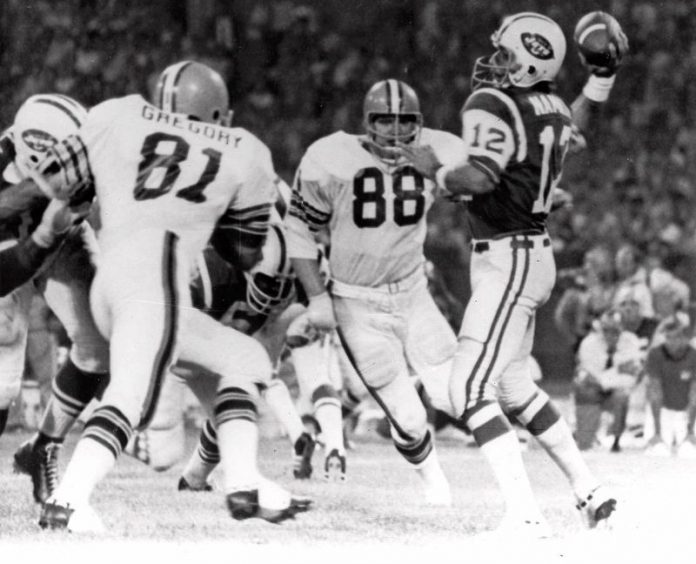The synthesized theme music. High camera views of the stadium. Pregame interviews with the star quarterback. Replays. Freeze frames. Kickoff under the lights. An experimental three-man booth. Most of the staples of modern football broadcasts debuted on Sept. 21, 1970, in the NFL’s regular-season premiere of Monday Night Football.
“From Municipal Stadium in Cleveland, Ohio,” intoned ABC announcer Keith Jackson, “two powers of professional football meet for the first time.” Howard Cosell handled the interview with New York Jets quarterback Joe Namath. Broadcasting newcomer Don Meredith endured a series of embarrassing video lowlights from his playing career, as Cosell guffawed on a split screen. And with that, the longest-running prime-time show in American history was born — a petri dish of technological and stylistic innovations that laid the foundation for what we will see Monday night when the Jets once again play their 1970 opponents, the Cleveland Browns.
Much of the evolution of today’s football broadcasts can be traced in a straight line back to 50 seasons ago, when ABC committed $25.5 million over three years to bring “show business to sports,” in the words of producer Roone Arledge. While technology has improved, and the advent of replay review has changed some artistic priorities, the product displayed in 1970 is structurally the same as what we see now.
But as the industry awaits the 2022 expiration of broadcast rights deals, it’s worth asking: Are NFL broadcasts on the precipice of much more dramatic change? What will the product, and viewership, look like when Monday Night Football hits its future anniversaries?
Accommodating digital migration
In some ways, television broadcasters find themselves in a similar position as newspapers in the 2000s, navigating a new platform while recognizing that its traditional content delivery remains more lucrative. The vast majority of NFL fans watch games on television, but the digital audience has far more capacity to grow.
In Week 1, for example, 43% more viewers watched games online than they did during the first week of 2018. The number was still relatively small, an average of 514,000 per game, but it grew enough to capture the attention of executives. In three years, when the time to negotiate new deals arrives, the league likely will have opportunities to shift at least some games exclusively to digital distribution.





